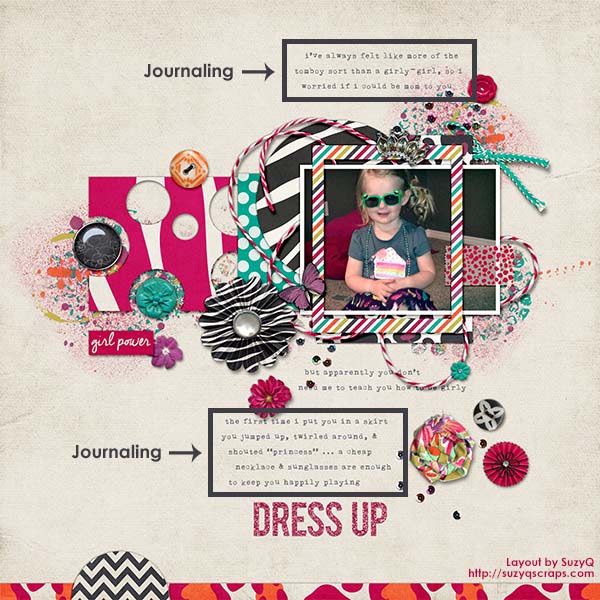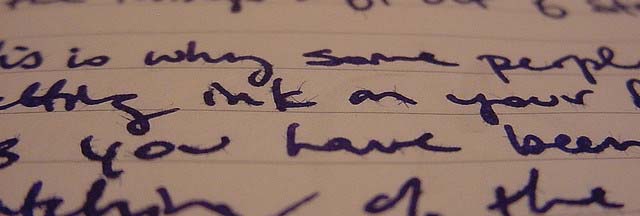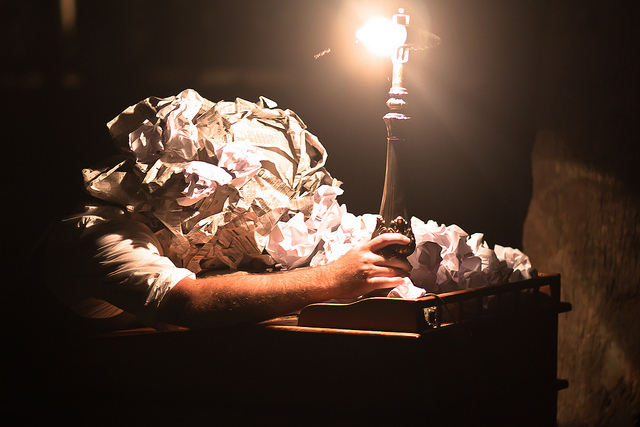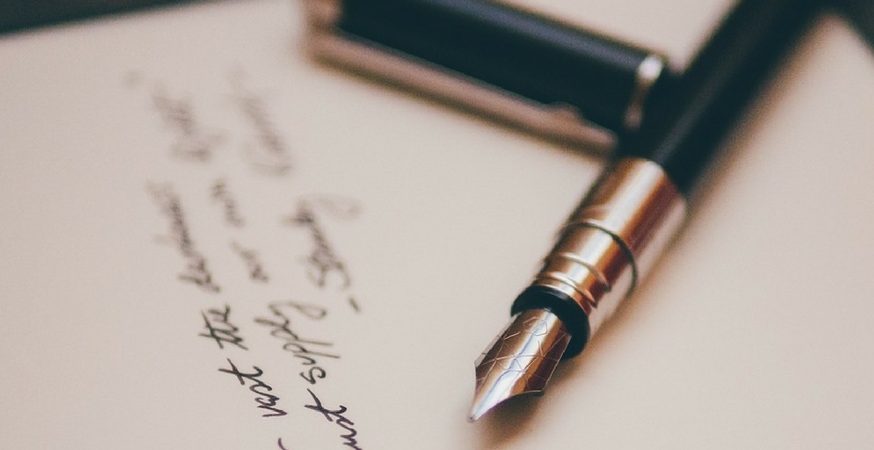Scrapbooking is about more than just displaying your photos – it’s about telling a story and celebrating a treasured memory.
In addition to adding an interesting visual element to your layout, journaling is the perfect way to tell the story behind your photo. Journaling can help add context, emotion, and depth to your memories, and no scrapbook layout is complete without it.
What is Journaling?
“Journaling” refers to the words that tell the story behind the memory captured by your layout. It can be as long or as short as you want, from a simple name and date to an extended trip down memory lane.
Journaling provides another outlet for your creativity because it gives you an opportunity to experiment with different typefaces and hand-drawn calligraphy. It can also add contrast to your page, help you create a cohesive layout, or fill in that awkward space you just don’t know what to do with!

To Type or Not to Type?
Gone are the days when you had to write everything by hand! But is this a blessing or a curse? Sometimes it feels like there are an infinite number of font and typeface choices available to the modern scrapbooker, and narrowing down your typeface options can certainly be a daunting task.
Next to choosing a photo, deciding between handwriting or typing your journaling is the biggest decision you’ll have to make.
When to Handwrite
If you want to add a personal touch. If you always type your journaling, try adding some handwritten stories to infuse your personal style into your layout. Or if you’re creating a page for a deeply personal memory, handwritten journaling adds a nice touch.

If you’re writing a letter. Everyone loves a handwritten letter! When I make scrapbooks as a gift, I like to include a page with a letter explaining why I created the scrapbook and how much the person I’m giving it to means to me.
If your journaling is short. If you’re only journaling a few words, such as a quotation or a name and date, handwriting is a much less daunting task. And it adds your own uniquely artistic flair to your layout!
When to Type
You’re telling a long story. Typed journaling often lets you tell more story in less space, unless your handwriting is super-humanly small and neat. If you have a longer story or want to make sure you don’t run out room, type out your journaling.
If an electronic typeface suits your story better. If you find a typeface that’s absolutely perfect for your memory, use it! Your font choice plays as important a role in telling your story as the actual words.

If you don’t like your penmanship. Not everyone is a calligrapher! If you think your writing is too messy for a scrapbook layout, opt for typed journaling instead. That way, you’re certain to have straight lights and uniform letters. Want to try handwriting your own calligraphy anyway? Check out this tutorial.
If you’re in a hurry. Typing your journaling is much faster than hand writing it. If you’re under a time crunch, type it out.
Overcoming Writer’s Block

Writer’s block doesn’t only afflict novelists and poets! If you’re having trouble getting the journaling ball rolling, try one of these tips:
1. Start with the 5 Ws. Ask yourself “who”, “what”, “where”, “when”, and “why”. Once you get the basics down, it’ll be easier to arrange them into eloquent paragraphs.
2. Just start writing! When I have writer’s block, I start typing whatever comes to mind. It may sound horrible, but it’s a lot easier to edit something you’ve already written than sit and wait for the perfect words to come out from the start.
3. Use bullet points. Jot down your thoughts and ideas as bullet points, and it’ll be much easier to connect them later on.
4. Use a quotation or a poem. Sometimes you’re just lost for words no matter how hard you try, and that’s okay! Try using a quotation from your favorite book, movie, or song, or even print out a poem that compliments the memory on your page.
Tips and Tricks
Ready to write? Here are some tips and tricks to keep you on the right path:
- Write on scrap paper. Don’t write directly onto your background paper or other special paper. That way, in case you make a mistake, you haven’t wasted your money and you can easily just start over!
- Write a letter. Letters add an intimate touch and a heartfelt feeling to your project, especially if you’re making your scrapbook as a gift.
- Keep a notebook with you so you can record your thoughts, ideas, events, and funny things your family and friends say as they happen.
- Practice and edit! Don’t just slap down a journaling story. Write a draft and prune and perfect it until its polished and ready for even the toughest of critics.
- Focus on the feelings, not the facts. It’s the feelings behind your memories that make scrapbooks so special, so make sure you include them in your journaling. They add a personal touch and make for a more colorful, engaging story.
Yours Truly
Journaling helps add context to your memories. By recording the thoughts and feelings behind your photos, you add another level of emotional resonance to your scrapbook layouts.
Sources
Gerif, LeNai. “Top Ten Journaling Tips.” Paper Wishes. 2014.
Lim, Fion. “Scrapbooking Journaling.” Everything About Scrapbooking. 2014.


